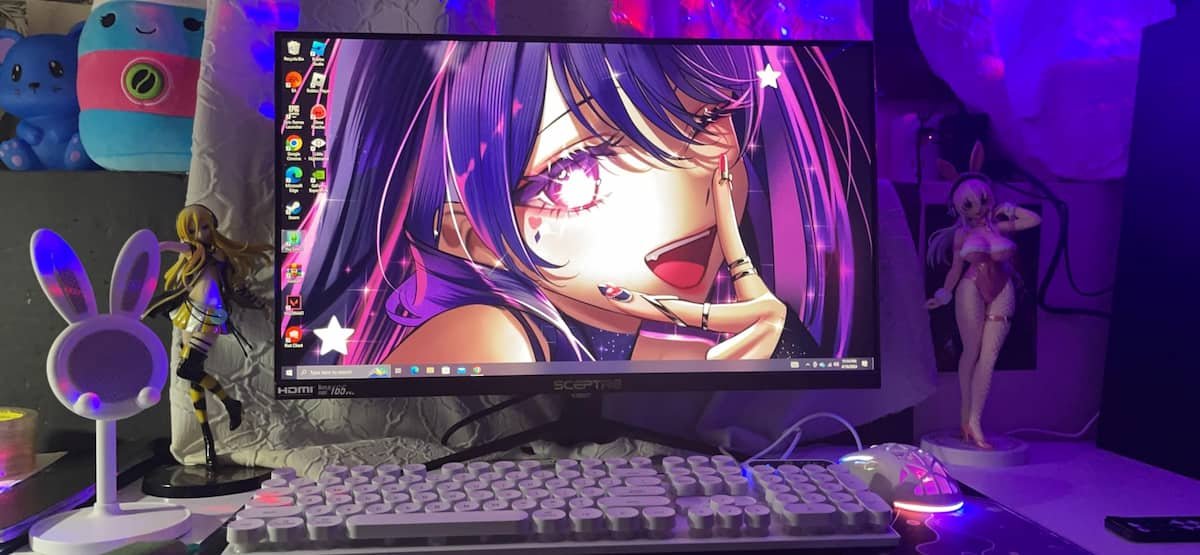When you start browsing for an affordable yet decent-quality monitor, there’s a good chance you’ll come across Sceptre. Their monitors are often top sellers on platforms like Amazon and Walmart, mostly thanks to their low prices and flashy specs. But the big question remains: Is Sceptre a good monitor brand, or is it just another budget name that cuts too many corners?
After spending time researching, testing, and comparing Sceptre monitors to other popular brands, I’ve put together this guide to help you figure out whether Sceptre is worth your money. Let’s take a closer look.
What Is Sceptre, and Why Is It Popular?
Sceptre is a U.S.-based company that’s been around since the mid-1980s. They focus on offering affordable displays—especially monitors and TVs—that appeal to casual users, students, home office workers, and gamers on a tight budget. While you won’t find them competing with Apple or Dell on the high end, their value proposition is hard to ignore if you’re trying to stretch your dollars.

Sceptre’s biggest appeal lies in its balance of decent specs and low price. Whether it’s a 75Hz 1080p office monitor or a 165Hz curved display for casual gaming, they aim to give users solid features without the premium price tag.
Entry-Level Design with a Few Surprises
Let’s talk design first. Most Sceptre monitors won’t win awards for aesthetics. They’re usually thin, lightweight, and straightforward—some with ultra-slim bezels, others a bit bulkier with a noticeable chin where the logo sits. The materials are mostly plastic, and the default stands can be basic, often lacking height adjustment or swivel.
That said, many models support VESA mounts, and Sceptre often includes adapter screws in the box. That means with a budget-friendly monitor arm, you can still get decent flexibility out of a basic model.
Ports and Connectivity
Sceptre usually includes the essentials. You’ll commonly find:
- Dual HDMI ports (often rated at 75Hz)
- A VGA port for legacy connections
- A 3.5mm headphone jack
- Built-in speakers (usually 2W)
Some users might be surprised that even the most affordable models come with two HDMI inputs, which isn’t always the case in this price range. However, don’t expect USB-C or DisplayPort on most models unless you’re looking at their newer or slightly more premium lines.
Performance and Image Quality
Now let’s talk display performance—arguably the most important aspect of any monitor.

Resolution Options
Most Sceptre monitors fall into the 1080p (Full HD) category, which is perfectly fine for everyday use. They’ve also expanded their lineup to include QHD and 4K models for users who want more screen real estate or sharper image detail. For example, the Sceptre 27-inch 4K UHD monitor has been well-received for offering decent sharpness at a low price point.
Panel Types
You’ll find mostly VA and TN panels across the Sceptre range. VA panels are known for good contrast and deep blacks, which is great for watching movies or working in darker environments. TN panels, on the other hand, offer faster response times but poorer color accuracy and viewing angles.
IPS panels—known for vibrant colors and wide viewing angles—are less common in the Sceptre lineup, but a few models like the Sceptre E248W-FPT do use IPS.
Color Accuracy and Brightness
Don’t expect perfect color calibration out of the box. Most Sceptre monitors are tuned for general-purpose use, not for professional editing or color-critical tasks. Brightness usually hovers around 250 to 300 nits, which is adequate for indoor environments but might feel dim if you work in a brightly lit room.
Gaming Experience with Sceptre Monitors
Sceptre has built a decent reputation among budget-conscious gamers, offering features like:
- 75Hz, 120Hz, and 165Hz refresh rates
- AMD FreeSync support
- Overdrive modes to reduce response time
Their gaming-focused models—like the Sceptre C305B-200UN curved ultrawide—deliver a surprisingly immersive experience for the price. While they won’t compete with high-end options from Asus or Alienware, they’re good enough for casual and even competitive gaming if you’re not chasing frame-perfect accuracy.

Keep in mind, though, that response times tend to be on the higher end (5ms to 8ms), and turning on Overdrive may introduce artifacts like ghosting. These are compromises you make for affordability.
Everyday Use and Productivity
For general use, Sceptre monitors perform well. They’re a great fit for:
- Office work
- Online classes
- Web browsing
- Media streaming
Many models come with “Blue Light Shift” technology and flicker-free backlighting, which makes them more comfortable to use for long hours. You won’t get the color precision needed for design work, but for Word documents, emails, and video calls, they do the job.

The Sceptre E275W-19203R, for example, is a 27-inch monitor with a 75Hz refresh rate and built-in speakers, making it ideal for students or remote workers who need a large display without breaking the bank.
How Sceptre Compares to Other Brands
| Feature | Sceptre | Samsung | ViewSonic |
|---|---|---|---|
| Price | Budget-friendly | Mid to high-end | Mid-range |
| Refresh Rate | Up to 165Hz | Up to 240Hz | Up to 240Hz |
| Resolution Options | Full HD to 4K | Full HD to 8K | Full HD to 4K |
| Color Accuracy | Basic | Excellent (IPS/VA) | Good (calibrated) |
| Build Quality | Basic | Premium | Solid |
| Best Use Case | Budget, casual use | Gaming, multimedia | Productivity, pro |
Compared to brands like Samsung or ViewSonic, Sceptre holds its own by targeting a very specific segment: users who want decent performance at the lowest price possible. While they don’t offer the premium build or feature sets of more expensive brands, they provide excellent value where it counts.
Pricing and Value
One of Sceptre’s strongest selling points is how much you get for the money. Some examples:
- Sceptre E248W-19203R: 24-inch 1080p IPS, 75Hz, ~$110
- Sceptre C275B-1858RN: 27-inch curved VA, 165Hz, ~$180
- Sceptre U275W-UPT: 27-inch 4K UHD IPS, ~$230
For under $200, you can get a 27-inch curved gaming monitor with a fast refresh rate. For under $300, a 4K monitor for creative work. That’s impressive by any standard.
Pros and Cons
What Sceptre Does Well:
- Affordable pricing across the board
- Solid refresh rates for casual gaming
- Decent build quality for budget models
- VESA mount support on most units
- Multiple ports including dual HDMI and audio jack
What Could Be Better:
- Limited color accuracy and factory calibration
- Few premium features (like USB-C, HDR10, or wide-gamut support)
- Mixed reviews on customer support and warranties
- Weak built-in speakers
- Basic design and stands without adjustability
Final Verdict: Is Sceptre a Good Monitor Brand?
So—is Sceptre a good monitor brand? If you’re looking for value without a long list of premium demands, then yes, Sceptre is absolutely worth considering.
They’re not perfect, but for students, budget gamers, or home office users, they check many of the right boxes. They might not impress professionals needing top-tier accuracy, but for most casual users, a Sceptre monitor gets the job done—and often for half the price of the competition.
In a market full of overpriced screens, Sceptre proves that you don’t need to overspend to get a solid, reliable display.